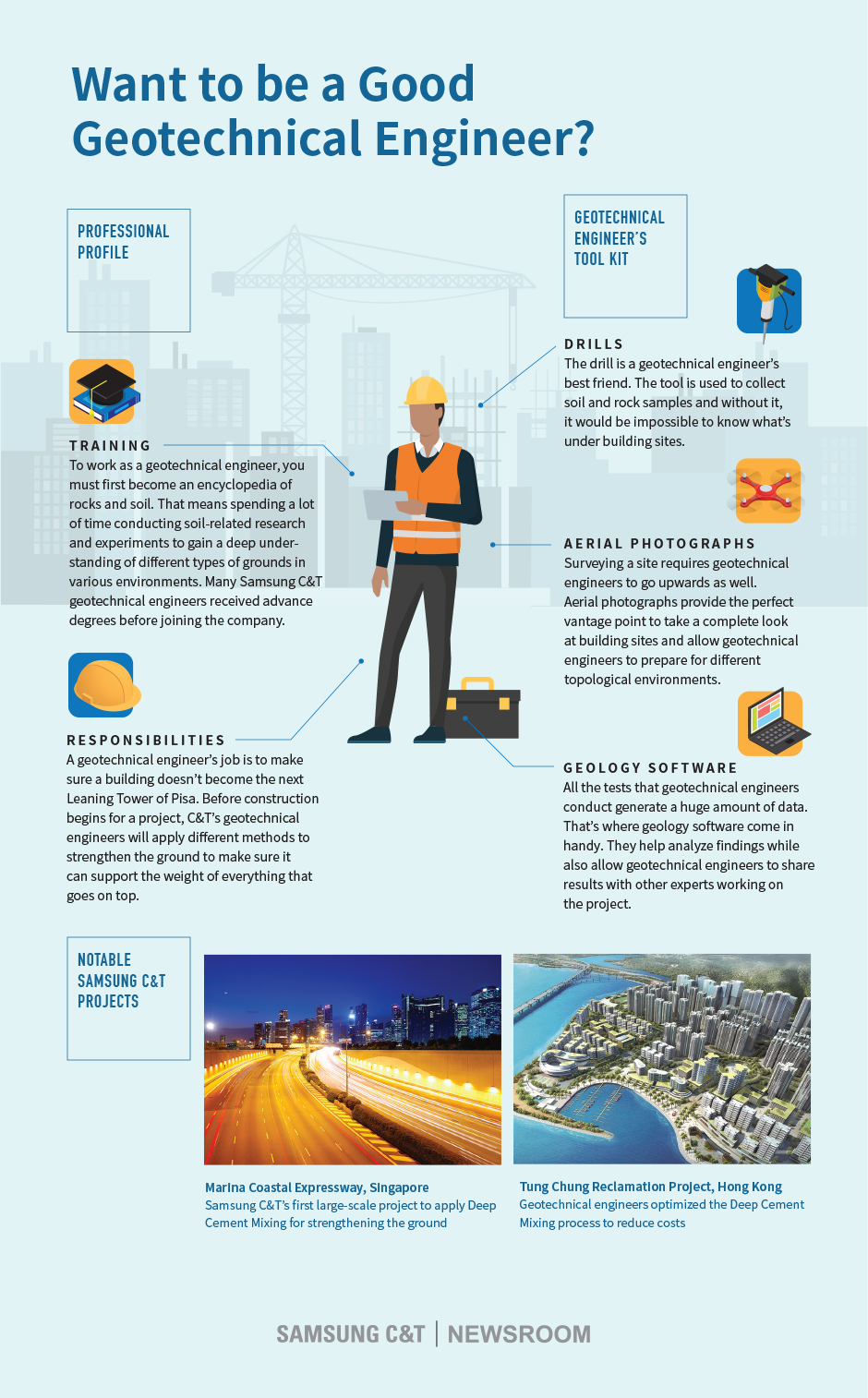The 6-Minute Rule for Geotheta
The 6-Minute Rule for Geotheta
Blog Article
Geotheta Fundamentals Explained
Table of ContentsGeotheta for DummiesThe smart Trick of Geotheta That Nobody is Talking AboutWhat Does Geotheta Mean?Some Ideas on Geotheta You Need To Know
They team up with civil designers, architectural engineers, designers, and various other professionals to incorporate geotechnical factors to consider into the general task layout and construction process. This requires effective team effort, sychronisation, and interaction to make sure that the geotechnical facets straighten with the job purposes and meet regulatory needs.Mining & Materials Engineering: Concepts of drilling, infiltration rates, and factors affecting the selection of boring approach. Blowing up techniques in surface area and underground operations. Mechanical and constant approaches to fragmentation, consisting of longwall shearing and fullface boring.
Modelling of fragment and bit dimension distributions; comminution as a transfer feature. Comminution technology: crushing, grinding, dimension classification. Integrated evaluation of fragmentation and comminution operations. Used by: Mining & Products Design.
7 Simple Techniques For Geotheta
Bachelor's degree programs in civil, geotechnical, geological, and environmental design commonly last 4 years and include general education programs in English, social science, and the humanities, in addition to courses in sophisticated mathematics, structural geology, and fluid mineralogy. (https://es.quora.com/profile/Ian-Hammond)
Geotechnical engineering involves the assessment of the soil and rock problems at a particular site, and their implications for the advancement of that website. As most frameworks rely on the ground for support, it lacks shock that an in-depth understanding of the ground problems, and the suitability of structure systems, are vital to the lasting stability and efficiency of the structure or structure.
Being experts in the investigation of geological formations and ground practices, geotechnical engineers do scientific examinations and screening to understand the effect these geological developments might carry the layout and construction of building, civil and infrastructure projects. This competence is critical for the layout and construction of buildings, roads, passages, dams, bridges, and water supply and sewage systems.
The geotechnical group at Douglas Allies consistently speak with engineers, layout designers, designers, and building contractors to make recommendations on design and advancement proposals to guarantee that the developed frameworks are appropriately created for the ground conditions. For instance, the design of footing systems needs to consider the weight of the framework, the ability of the ground to support that weight together with movement resistances and reliable building and construction.
How Geotheta can Save You Time, Stress, and Money.
This task is considerably simplified by the usage of our Douglas Map geospatial platform which makes this details easily obtainable in a simple to make use of web browser interface. A geotechnical engineer will certainly guide the drilling of boreholes and test pits to accumulate soil and various other samples, and additionally evaluate surface area features and ground exposures to create a geotechnical model of the subsurface problems.
Depending on the task type and ground problems experienced, research laboratory testing may amongst other points assess stamina, compressibility, sensitivity and/or permeability of soil and rock samples. Hereafter information is accumulated and collated, the results are used for a geotechnical model of the website, which is generally offered as areas across the site.

A geotechnical examination by nature can just analyze the ground conditions at the areas drilled or dug deep into. Natural variants in dirt and rock problems can happen throughout a website and in between examination areas. It is for that reason great practice that the geotechnical designer be preserved throughout construction of the project to offer on-site confirmation that the ground problems come across are consistent with the expectations and guidance given in the geotechnical examination record.
Some Known Factual Statements About Geotheta
Geotechnical engineers utilize their comprehensive knowledge of soil and rock to evaluate risk and solve problems on varied facilities projectsGeotechnical engineering is a specialist branch of civil design which considers the behavior of earth products and the application of soil and rock technicians. Geo Tech Engineering. As a geotechnical engineer, you will certainly evaluate the physical, mechanical and chemical homes of dirt and rock in order to develop foundations, maintaining structures and earthworks
Geotechnical engineering is very closely linked to and overlaps with, both design geology and ground design - https://www.twitch.tv/geotheta/about. It's feasible to specialise in geotechnics or help a geotechnical company yet be recognized as a design geologist or a ground designer. As a geotechnical designer, you'll need to: construct and keep partnerships with customers and other professionals included in the site, throughout each projectmaintain safety and security standards on site be conscious of expense implications when you make recommendationsstudy geological maps and aerial photos from a series of resources and from different time periodsexamine building and construction prepares to see how feasible they are based upon your understanding of the siteinvestigate threats or geological threats for the sitesearch for environmentally delicate attributes, such as land fill begin to create factual and interpretive ground modelsplan area investigationsdrill and evaluate samples of bedrock, soil, groundwater and additional products supervise various other professionals on sitesolve technological issues as they emerge, such as unexpected frameworks at drill sitesmonitor conditions throughout and after building to see to it frameworks are secure in the brief and long termadding information collected on site to your first researchcreating geotechnical calculations, illustrations, and two or three-dimensional computer system models analyzing the datamaking recommendations regarding the he has a good point recommended use the website

Report this page